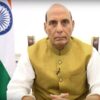Letter from the Editor

With former space scientist Dr. K. Kasturirangan, chairman of the nine-member committee which authored the 484-page Draft National Education Policy, 2019 which translated into the 66-page National Education Policy (NEP) 2020, having unobtrusively accepted the position of chairman of a steering committee to implement NEP 2020, the speed of overdue reform of India’s moribund education system is accelerating.
Last October, the Union education ministry formally launched the National Curriculum Framework for Foundational Stage 2022 detailing ways and means to incorporate vitally important professionally administered early childhood care and education — which your editors have been stridently advocating since 2010 — into the new 5+3+3+4 school education system.
Moreover, it’s a welcome development that implementation of the Kasturirangan Committee’s root and branch reforms in higher education — the other end of the learning spectrum — has also gathered momentum. As reported by our Delhi-based correspondent Autar Nehru (see p.18), Prof. Mamidala Jagadesh Kumar, chairman of UGC (University Grants Commission) — the apex regulatory body of higher education — is rolling out liberalisation reforms proposed by NEP 2020 at fast clip, and has emerged as the can-do point man for higher education reforms of the BJP government.
Yet the plain unheralded truth is that the reform rush that’s shaking up the shady bowers of Indian academia has been catalysed by the country’s new age private universities legislated by state governments. They have infused new life and stimulus into the country’s also-ran higher education institutions — 42,000 colleges and 1,072 universities, some of them of 150 years vintage — a few of whom are ranked in the bottom deciles of the World University Rankings league tables of Quacquarelli Symonds (QS) and Times Higher Education, the highly-reputed London-based rating agencies which assess and rank HEIs around the world.
Only after emergence on the national landscape of a rash of new genre, globally bench-marked privately promoted universities — anathema to left and left-liberal academics, politicians and media pundits who have presided over the slide of public universities into mediocrity — has a new spirit of competition and search for academic and research excellence invaded India’s lackadaisical higher education system. For further and better particulars, read our unprecedented cover story of this issue.
For the engaged and intelligent, there is rich fare in this first issue of 2023. Check out respected public intellectual Sudheendra Kulkarni’s case for settling the long-pending border issue with China; US-based educationist Jessica Cavallaro who advocates new age agile classrooms and the People page which introduces academic VIPs.
Let’s co-operate to make 2023 a landmark year for Indian education!

















Add comment